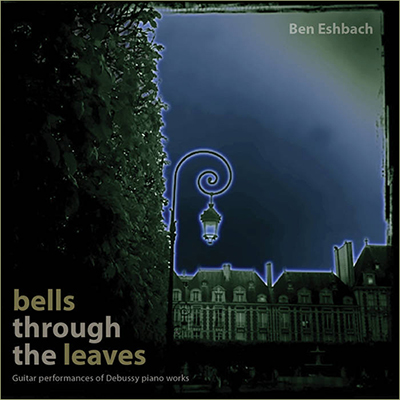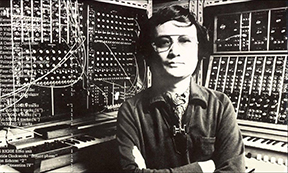
|
I grew up listening to Tomita's record. It's how I first heard Debussy. Later I would discover my favorite piano interpreters of Debussy; Arturo Michelangeli, Walter Geiseking, Phillipe Entremont and Werner Haas. When I decided to start recording guitar versions of Debussy pieces I wanted to create note-for-note renditions, not traditional transcriptions. Even though I'd been playing guitar for forty years I knew that there was no way I could accomplish this with a transcription. Guitar transcriptions must necessarily pare down Romantic era piano music to accommodate the limitations of a six-string guitar and the limitations imposed by the layout of the fretboard -- for instance, its inability to accommodate more than three closely clustered tones simultaneously without impossible constant retuning of the instrument. To remedy this I recorded almost all of Bells Through the Leaves one note at a time on to separate tracks. This gave me both the ability to duplicate each note of the original music and to control the position of each note in the final stereo image, the string each note is played on, pickup position of each note, where on the string the note is struck (by the bridge or by the neck, etc.), whether it is struck by pick or finger, whether the left hand is fingered or a slide is used, whether the string is muted or sustained and so on. My main commitment was to resist the urge to copy/paste arpeggiated or repeating passages. Every note you hear is uniquely recorded and shaped for its context. The result you hear is not a guitar performance in any traditional sense of the word. Or, more accurately, it's thousands of "performances" of single notes stacked, nudged and mixed to sound something like a performance. As one can imagine, this took a long time to do. Most of these tracks took over eighty hours each to record and to mix. Unlike Tomita (or even Glenn Gould) I didn't have to use razor blades to line up the performance. I just needed command-arrow. And lots and lots of time to work. Ben Listen and download here. |

